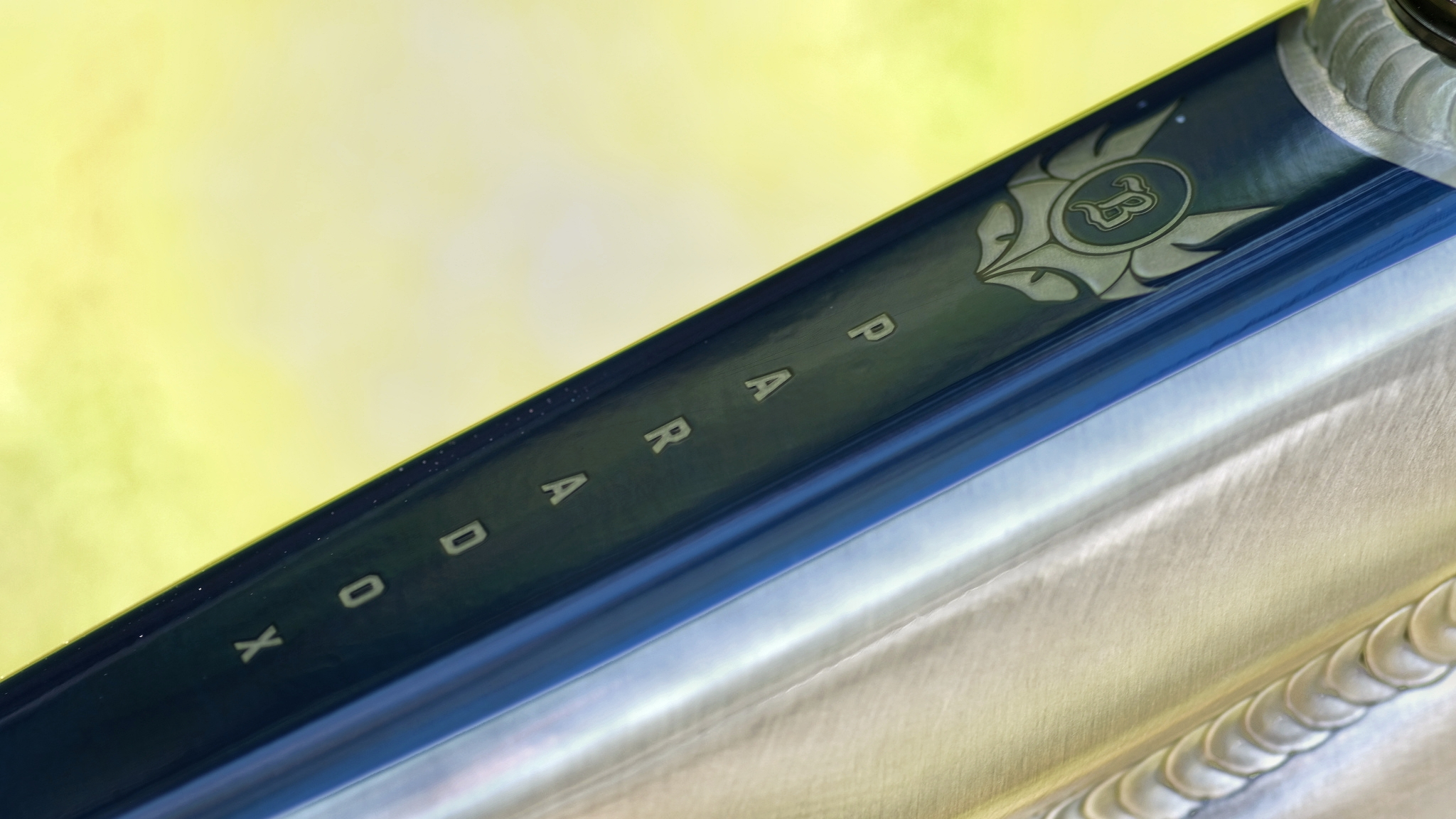Early Verdict
While the frame is not yet a bike, I can't wait to build up the Paradox and put it through its paces on the trails.
Pros
- +
Built with 7005 T6 alloy for extra strength
- +
Uses forged rather than machined parts
- +
Excellent build and finishing
- +
Headset, seat collar, and axle included
- +
Boost rear end
Cons
- -
No small sizes
- -
Not UDH compatible
Why trust BikePerfect
Banshee's Paradox V3 frame has been around for a few years now, but I've got one in to build into a long term test bike which I'm planning to try out in a number different guises. Since its launch, the Paradox has built a reputation for being a super-compliant aluminium hardtail which deservedly has a place in our best hardtail MTB guide. But before I begin turning the frame into an actual bike, I thought the Banshee frame itself warranted a closer look.
Tube riding
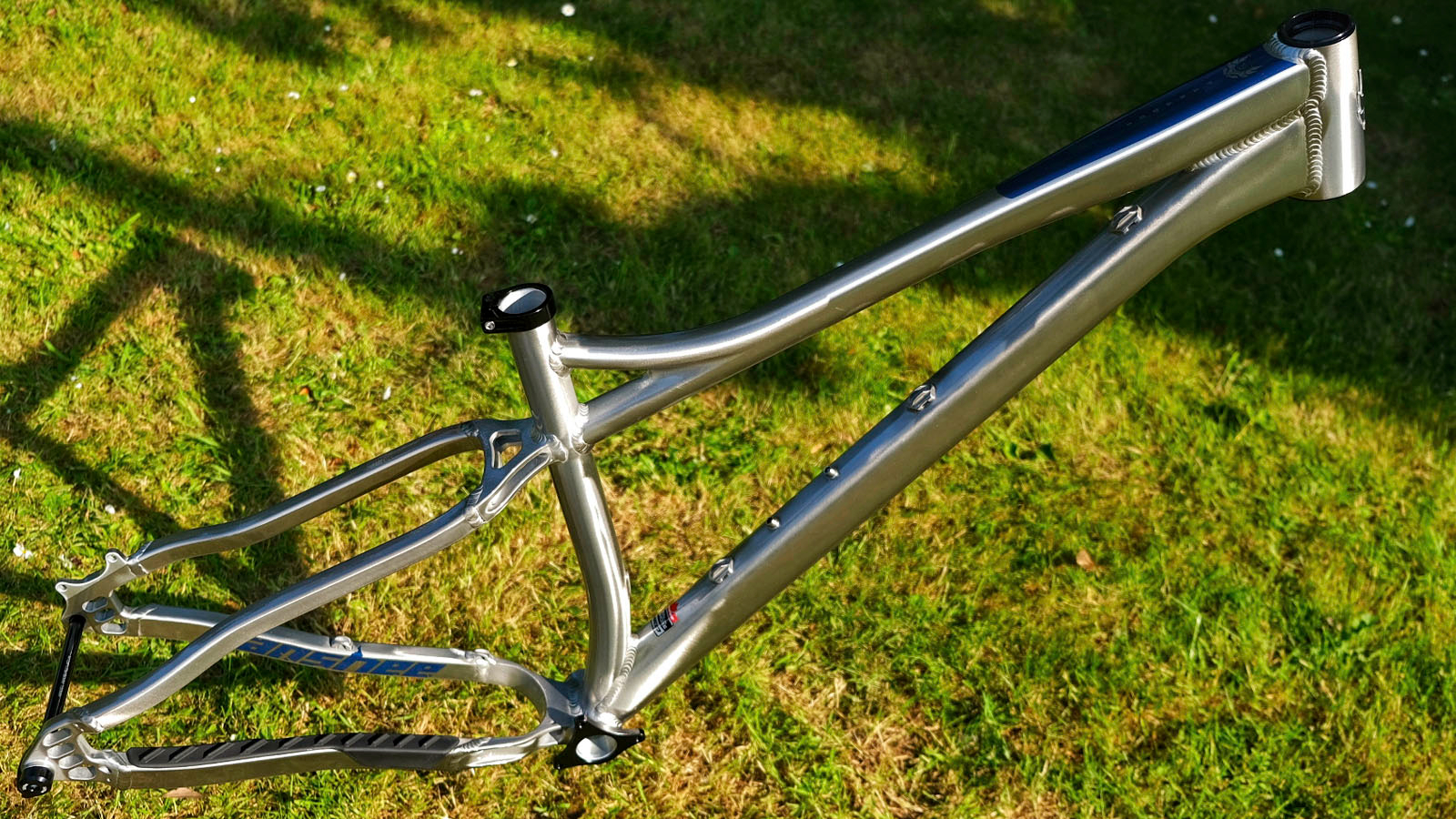
While a lot of manufacturers use 6061 T6 alloy to build their frames, Banshee opts for 7005 T6 for their tubes and forged parts – an alloy that's proven to be stronger and can withstand more stress than 6061 T6.
Hydroforming frame tube sets is pretty standard across the industry as it's the most convenient method of forming precise and consistent aluminum tubes. It involves creating a steel former, putting the aluminum tube inside, then filling it with hydraulic oil at a huge pressure to create the desired shape. Banshee uses this process to excellent effect across the Paradox, particularly with the baseball bat-shaped top tube that starts fatter before slimming down and then splitting in two to brace the seat tube – many rival manufacturers weld on a brace instead.
Banshee also highlights that their seatstays and chainstays are made with an internal rib running throughout the length of the tubes. This helps make them stronger and improves lateral stiffness.
Forging ahead
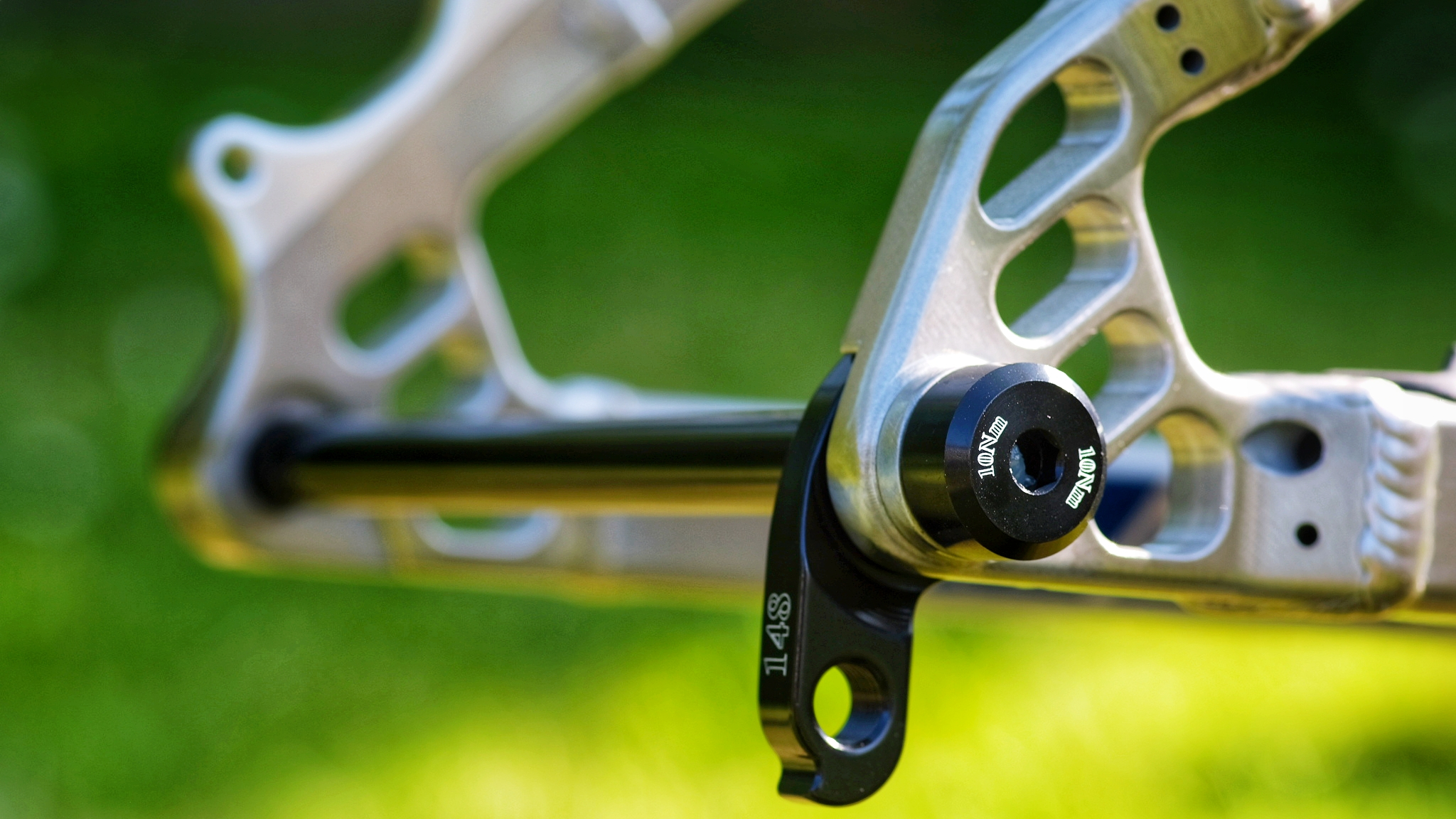
While some brands use CNC machined frame parts, Banshee are proud of their forged stays, yokes, and rear dropouts. Not only are they more pleasing to the eye, these parts are also stronger as forging makes the alloy's grain structure (which forms as the liquid metal solidifies) more dense.
Talking of the dropouts, the Paradox is set up with a Boost width 12mm axle and designed to run either 29 or 27.5in wheels. The stated maximum tire width for 29-inch wheels is 2.5in and 2.8in for 27.5.
Simple setup and adjustment
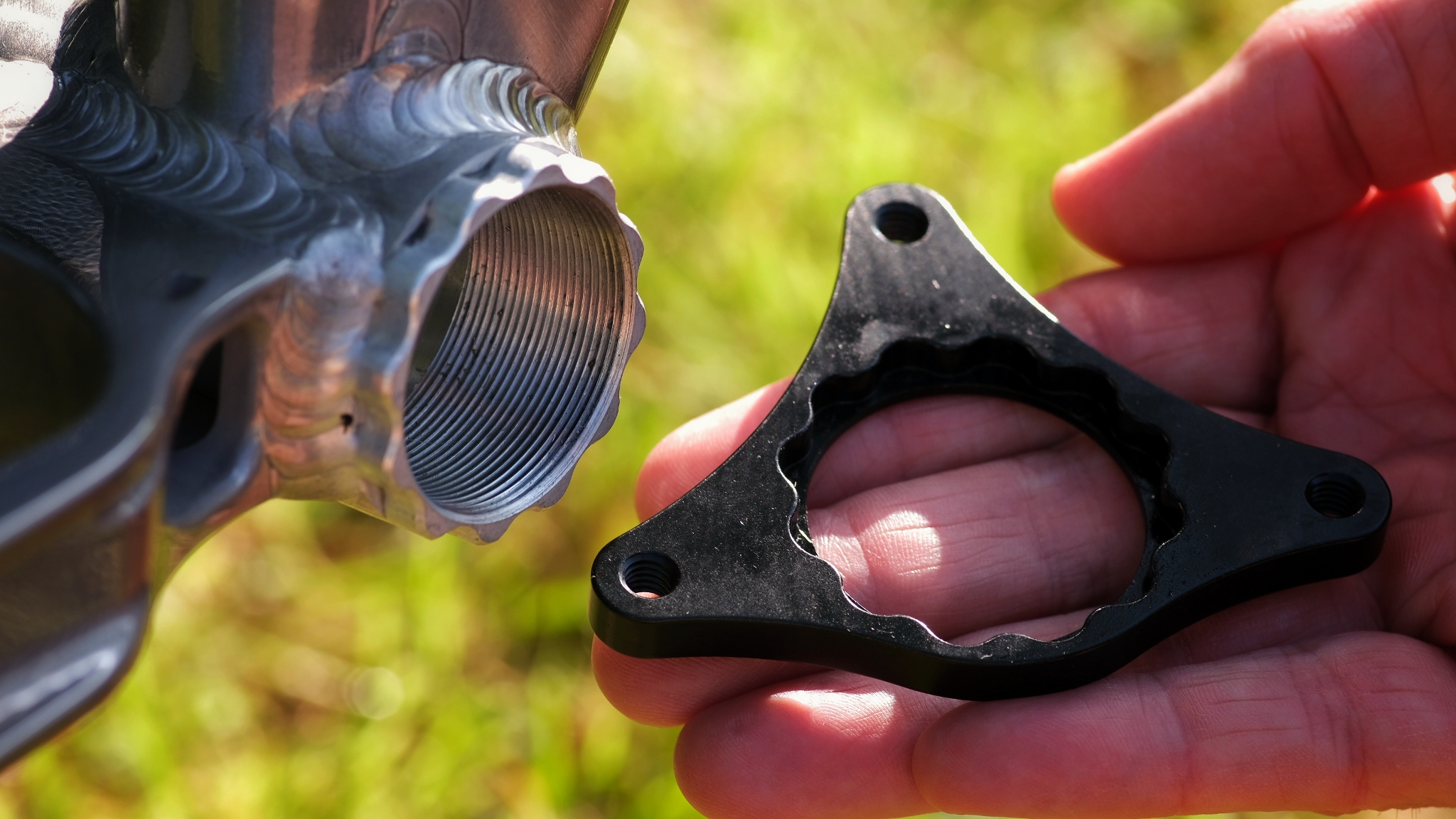
Threaded bottom bracket shells make installing and maintaining a bottom bracket much easier and Banshee uses the 73mm threaded standard across their entire range of bikes.
The Paradox V3 comes with an ISCG-05 chain guard mount, but instead of being part of the bottom bracket shell, it's a separate piece that neatly fits to the frame via a splined section. Being removable and repositionable, the mount is designed to allow you to get your chain guide in the exact position you want and also breakaway in the event of a heavy crash that would otherwise mean ripping the mount from the frame.
Frame geometry
Banshee recommends running a 120 to 150mm suspension fork and has based the geo measurements on their website on a 550mm axle-to-crown length with a 44m offset model, which equates to a typical 140mm fork designed to run a 29in wheel.
For the medium frame I'll be testing, the Canadian brand measures the head angle 65 degrees which sounds ideal for confidence on steeper trails without being overly slack. Similarly, the effective seat tube angle is measured at 76.25 degrees, which would give a decent climbing position.
The 605mm effective top tube is a tad shorter than many of the Paradox's rivals these days – longer bikes are designed to give a more stable performance on descents, the flipside is that they're less playful. Though a more poppy and agile feel will suit the initial build I'm planning.
Slick finishing
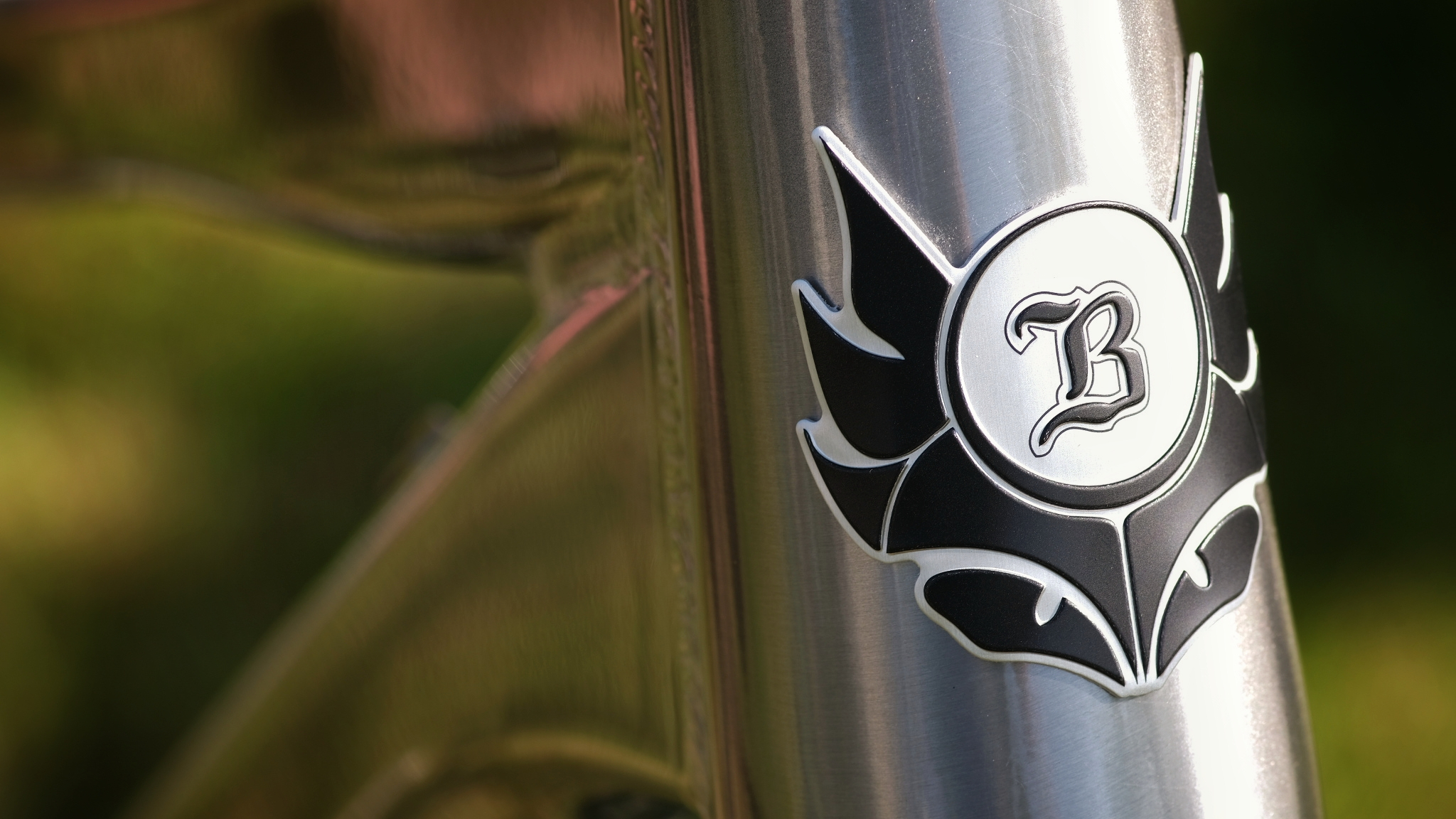
While shooting the Paradox frame in sun, I was really struck by how good the finish looked glinting away in the evening light. The polished Raw version here (it also comes in Anodized Black) is stunning. The lacquered finish has a hint of gray to it which helps accentuate the welds and other frame details. To be honest, it looks so good, it's almost a shame to expose it to trail abuse, although Banshee includes a vial of lacquer so you can touch up the frame after the inevitable scrapes and scratches. Another quality touch is the embossed and painted metal Banshee head tube badge.
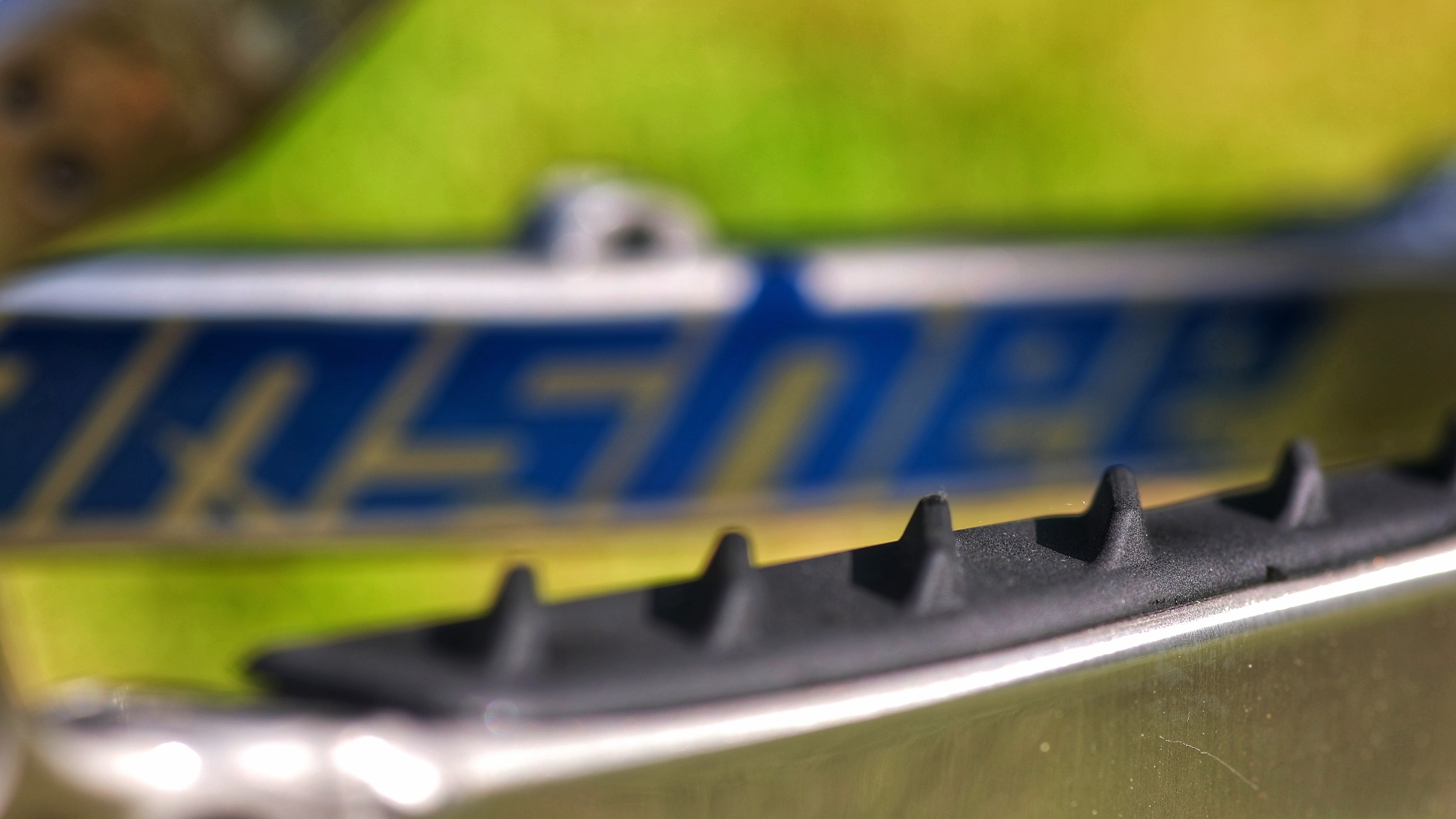
The frame also comes complete with chainstay protection, headset cups, seat tube collar, hanger, and rear axle installed. You also get the rest of the Banshee branded headset, a spare hanger, Banshee stickers, and a bundle of zip-ties along with the frame.
So, what's not to like?
Having not ridden or even built the frame up, it's hard to be critical just yet. However, there are a few aspects that potential buyers should be aware of. The Paradox was designed before SRAM's UDH hanger was released, so the frame isn't compatible with the US component giant's latest T-Type hangerless derailleur systems. The Paradox also only comes in three sizes – medium, large and x-large, so smaller riders will miss out.
There will be more on the Paradox once I've completed the build.
Tech specs: Banshee Paradox V3
- Use: Trail / all-mountain
- Construction: 7005 T6 aluminum alloy
- Recommended fork travel: 120 to 150mm
- Weight: 5lb 5oz / 2.44kg (medium actual)
- Head tube angle: 65 degrees
- Wheel size: 29 or 27.5 degrees
- Rear hub spacing: 148x12 Boost
- Seatpost diameter: 31.6mm
- Bottom bracket: 73mm threaded
- Finishes: Raw (featured), Black Anodized
- Sizes available: M, L, XL
- Price: $1,149 / £899 / €999 / CAD$1,600 (frame only)
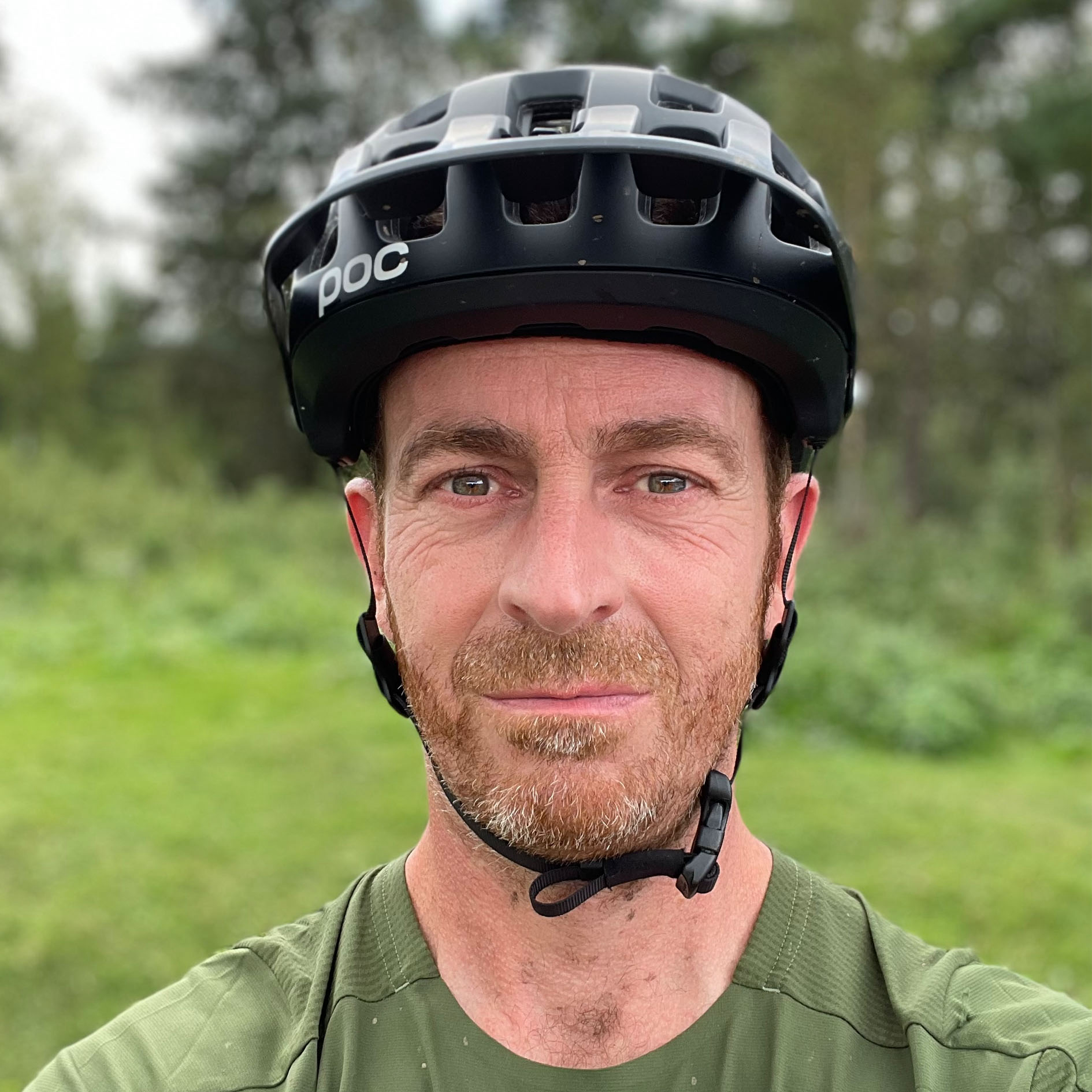
Rich Owen joined the BikePerfect team as editor in 2021. He's worked as a journalist and editor for over 24 years, with 12 years specializing in cycling media. Rich bought his first mountain bike (a rigid Scott Tampico) in 1995 and has been riding MTB for almost 30 years.
Current rides: Merida One-Forty 6000, Banshee Paradox, YT Jeffsy Core 3, Saracen Ariel 30 Pro
Height: 175cm
Weight: 69kg
What is a hands on review?
'Hands on reviews' are a journalist's first impressions of a piece of kit based on spending some time with it. It may be just a few moments, or a few hours. The important thing is we have been able to play with it ourselves and can give you some sense of what it's like to use, even if it's only an embryonic view.
